Margot Robbie I, Tonya Interview
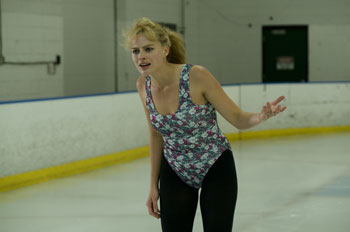
Domainating The Ice with Unrivaled Athleticisim
Cast: Bojana Novakovic, Allison Janney, Margot Robbie, Sebastian Stan, McKenna Grace, Julianne Nicholson
Director: Craig Gillespie
Genre: Biography, Drama
Rated: MA15+
Running Time: 119 minutes
Synopsis: Tonya Harding dominated the ice with unrivaled athleticism. She dominated the headlines for something else entirely. I, Tonya is an at times absurd, tragic and hilarious look at the woman at the center of the biggest scandal in sports history.
I, Tonya
Release Date: January 25th, 2018
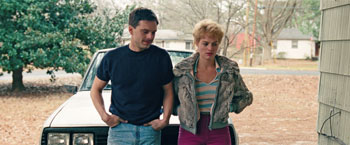 Interview with I, Tonya Producers: Margot Robbie, Tom Ackerley, Bryan Unkeless and Steven Rogers (Producer & Writer)
Interview with I, Tonya Producers: Margot Robbie, Tom Ackerley, Bryan Unkeless and Steven Rogers (Producer & Writer)
Question: Tell us about the film I, Tonya and what it is about.
Margot Robbie: The title card at the beginning of the film really sums it up: it's a film 'based on irony-free, wildly contradictory, totally true interviews with Tonya Harding and Jeff Gillooly." It explains the structure of this story" it's not a conventionally structured film and that's because it is based on these two completely contradictory interviews between Tonya and Jeff. And that's how Steven formed the script" around these compelling interviews.
Steven Rogers: There was a great documentary on 30 for 30 that Nanette Burstein did about Tonya Harding that I watched with my niece who had never heard of Tonya Harding. There were these ideas in the documentary that were barely touched on that interested me about Tonya's story. Mainly, it was this idea that media and people change the narrative to control the stories we read and hear about. So, I went onto the Tonya Harding website and found that her life rights were available. I thought to myself 'wherever this takes me, I'm gonna go.' I flew up to Portland and interviewed Tonya, and then I interviewed Jeff Gillooly. Their stories were so wildly contradictory… I knew that angle was my way in" I could present all the different sides of the story and let the audience decide.
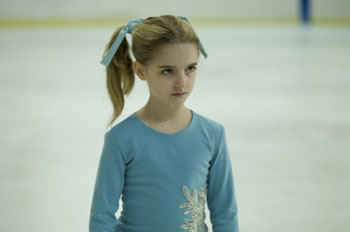 Question: What is the significance behind the title I, Tonya?
Question: What is the significance behind the title I, Tonya? Steven Rogers: It was about three things" first, it was me having fun with the famous book I, Claudius by Robert Graves. Second, it was centered around the courtroom oath of 'I, Tonya swear to tell the truth…" Then third, there was something about it that I liked because when you're being interviewed, you put on your good face, and this is what a lot of the characters are doing by having their narrative told.
Question: Talk about the director, Craig Gillespie. Why did you choose him to direct the film and how did you work together to achieve your vision?
Bryan Unkeless: We all really like Craig's work. We had the luxury of meeting with a lot of talented directors. This enabled us to make a truly educated choice, because we got to hear so many perspectives on the script. Where Craig really set himself apart was his very clear understanding of tone, which is so important to this film. On one page of Steven's script you can feel horrified by the violence, then sad and then you may laugh out loud. If Craig didn't have that nuanced touch, it would have tonally pulled things apart. Craig is so good at making all those emotions comment on one another, while still feeling like part of the whole. Thematically, Craig was the first to point out that Tonya really was this young girl" she was in her late teens, early twenties throughout this whole thing. Imagine the whole world bearing down on you. In the scene where Tonya's in Lillehammer complaining about her skate, it seemed so absurd to everyone else. But, from Tonya's perspective, this was horrific and terrible. You really empathise with Tonya there. Craig tapped into this sense of empathy for Tonya. And he did that for all of our characters… not making them punch lines but making them people. We were very reliant on his experience to make this film a reality.
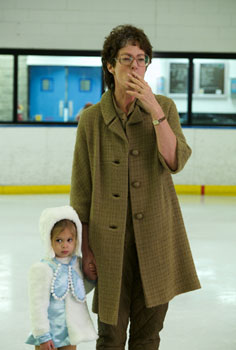 Question: Where was the film shot?
Question: Where was the film shot? Margot Robbie: We shot in Atlanta. Tonya actually lived in Portland and we obviously looked at locations there as well, but Atlanta was the best match. It provided the tactical things we needed and with the industry booming there, we had access to such a great crew.
Bryan Unkeless: Atlanta has such a great infrastructure. At first, we were worried because we wanted to shoot in the Pacific Northwest… we were concerned whether we could actually get Atlanta to look like Portland. Luckily, we found some great locations" the city had great ice skating rinks… and to top that off, the team there is so wonderful and the city is very supportive of the film industry. We are very appreciative of Georgia.
Question: Talk about the casting process.
Tom Ackerley: We were fortunate enough to have Allison Janney already attached for LaVona, as Steven wrote the role specifically for her. There truly couldn't be anyone better… she's phenomenal. We auditioned so many actors for the role of Jeff Gillooly. He was the hardest character to cast. Sebastian was so un-predictable… every decision he took surprised you and I think that is one of the greatest talents an actor can have. He took on the role of Jeff in a way that really humanized him. Sebastian brought an authentic sensitivity to his portrayal that we all felt was critical.
Steven Rogers: He understood the tone in his presentation. As did Paul Walter Hauser who plays Shawn Eckhardt, the bodyguard. There was no caricature in either performance" they were both dead honest in what they did together. Both Sebastian and Paul did such an exceptional job showing us where these two guys were coming from and how they could have ended up in this surreal situation.
Margot Robbie: What Julianne Nicholson did that was amazing with the character of Diane Rawlinson, Tonya's coach, was playing the part of everyone watching. How often do we stand by and see something bad happening and don't know if it's really our place to do something about it? Diane was in a tricky spot, at least the Diane we portray in our film… she's sort of this maternal figure to Tonya, but Tonya is not her child. We needed an exceptional actress to pull off what Julianne did. It was a tough shoot. Anyone who has ever made an Indie film will tell you, it's a real hustle. And especially for this project, we had a very short amount of time to shoot a lot of scenes and a limited amount of money. Everyone" cast and crew" had to want to bleed for this film to make it happen. And they did. Not only were the cast exceptional actors, but they went above and beyond what you normally see actors doing… the same goes for our crew members. This is the kind of film that would have never succeeded without that kind of passion and commitment.
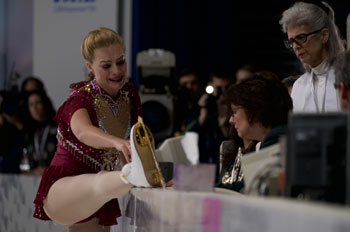 Question: What were the challenges in making this film?
Question: What were the challenges in making this film? Tom Ackerley: The nature of this movie" it's a 256-scene script that includes four skating competitions, which incorporates two Olympics. In regard to filming, the scale of what that actually means is a challenge of its own. You can watch the skating scenes and experience them as an action scene in an action movie. The mechanics of how we filmed the skating is viewed in the same way, with stunts, visual effects and all the other elements that have to be brought together for scenes like this to be accomplished. Then throw in the fact that all of that has to be done on ice! It's an incredibly complex process. Also, considering time shifts so quickly" our film spans Tonya's life, from the age of four to 44" so the makeup, costumes and prosthetics to pull off each period adds up to tricky production issues. To do all this, on an Indie movie-making scale and budget was an incredibly challenging prospect.
Question: Since I, Tonya is based on true events, how did you work to marry the real story with the film?
Steven Rogers: The script was based on the interviews with Tonya and Jeff. Their accounts of the events were so wildly different… I knew I had a movie. What's interesting is that Jeff has never told anyone his point of view about what happened. He's commented on stuff for Hard Copy or A Current Affair, but he's never told anyone his side of it. I don't know why he told me, but I'm glad he did. Outside of the interviews, we also did a ton of research and found verbatim dialogue from Shawn, the bodyguard, and Diane. It's not easy to take someone's life and reduce it to two hours, but we worked hard to find the right balance and marry the true story with the film.
Tom Ackerley: From a physical production sense, it's fun to have a true story to build around. Our costume designer and hair and makeup team did such a phenomenal job replicating all the looks from the footage we dug up. It was a challenge, but such a great part of bringing this film to life in the most accurate way possible. I think our creative teams really hit the nail on the head in representing these real people in our film.
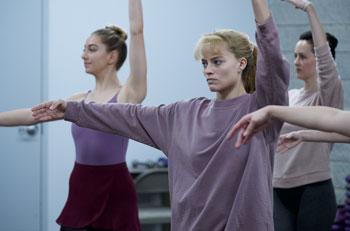 Question: How did your own research on Tonya Harding inform this film?
Question: How did your own research on Tonya Harding inform this film? Margot Robbie: There is so much amazing footage of Tonya online. Not just from when she was convicted" there was a documentary made about her when she was 15, and obviously there's the 30 for 30 piece on her as an adult and then everything in between. From an acting perspective, this footage was invaluable to getting Tonya's accent and mannerisms right. I spent so much time listening to these clips. Certain phrases would find their way into the scenes even though they weren't written in. So, the film embodies a lot of little things Tonya specifically said here and there. The research also helped when we were filming the skate choreography" we were able to best replicate Tonya's exact routine. I was on YouTube almost every second of this shoot.
Bryan Unkeless: It was pretty impressive" Margot did such a deep dive on all the footage she found on YouTube. In fact, she was able to pull up the Lillehammer scene where we could hear word-for-word what the coach was telling Tonya before she went out on the ice. The gestures, the emotion, the intensity… everything was very much replicated and authentic to the true story.
Margot Robbie: I remember Julianne saying, 'What would Diane tell Tonya to do right before her Olympic skate?" And in most of the footage, you couldn't actually hear what Diane was saying, but I remembered a clip where this random news site had gotten the audio. So, we were able to find out exactly what Diane said to Tonya right before going out on to the ice. There were many instances like this, where we could replicate the dialogue wordfor-word, moment-to-moment. Also, there were so many images of Tonya we found online, which inspired Craig's vision and many moments aesthetically.
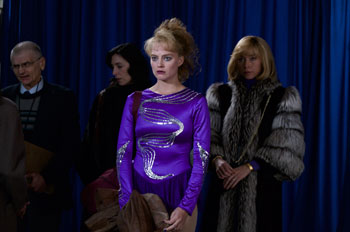 Bryan Unkeless: What Craig often tried to do is take the images that are familiar to the story as touchpoints, and then show them from a different point of view. He brought more energy to the telling of the story. It feels like we're always moving. We're used to seeing skating from a long angle lens, but he really gets right in there and you can feel the energy. At times, it almost feels like Tonya's skate is going to hit the camera. It's a fun new look at things that we think we've seen before.
Bryan Unkeless: What Craig often tried to do is take the images that are familiar to the story as touchpoints, and then show them from a different point of view. He brought more energy to the telling of the story. It feels like we're always moving. We're used to seeing skating from a long angle lens, but he really gets right in there and you can feel the energy. At times, it almost feels like Tonya's skate is going to hit the camera. It's a fun new look at things that we think we've seen before. Tom Ackerley: I don't think anyone has actually filmed skating on ice the way we approached it. Craig really wanted to be out there on the ice with Tonya and that was such a challenge in itself. You can't bring all this big equipment on to the ice. So, to have Dana Morris, the camera operator who could skate and had this very synergetic relationship on the ice with Margot, was very lucky.
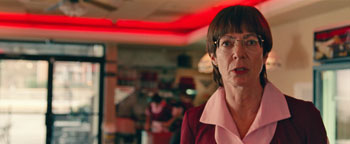 Question: How does Tonya feel about the film?
Question: How does Tonya feel about the film? We really didn't know what to expect when we screened the movie for Tonya. It must be such a strange feeling watching a version of your life portrayed up there on the big screen. But we were all so happy when she wholeheartedly embraced the film. She was actually moved to tears and it was fun for her to watch all her skating routines re-enacted with such close attention to detail. She especially loved the actors' performances" she thought Margot really captured what it felt like at that time of her life. And she laughed at the jokes, too!
I, Tonya
Release Date: January 25th, 2018
MORE





